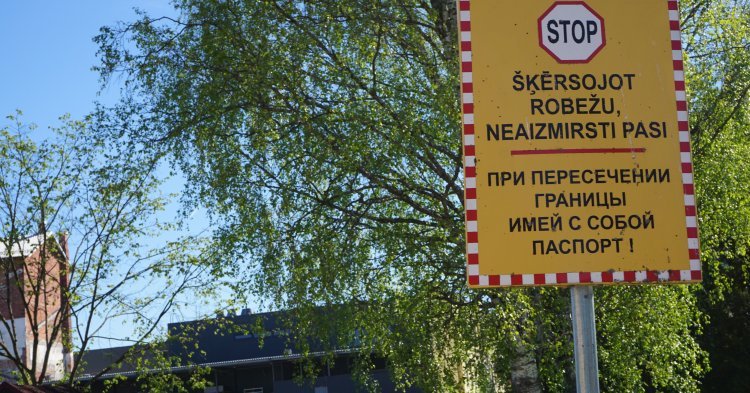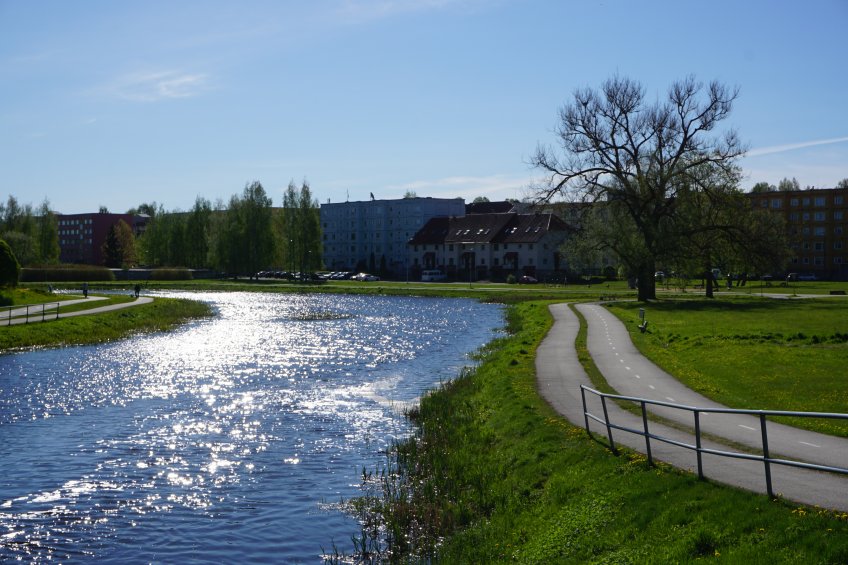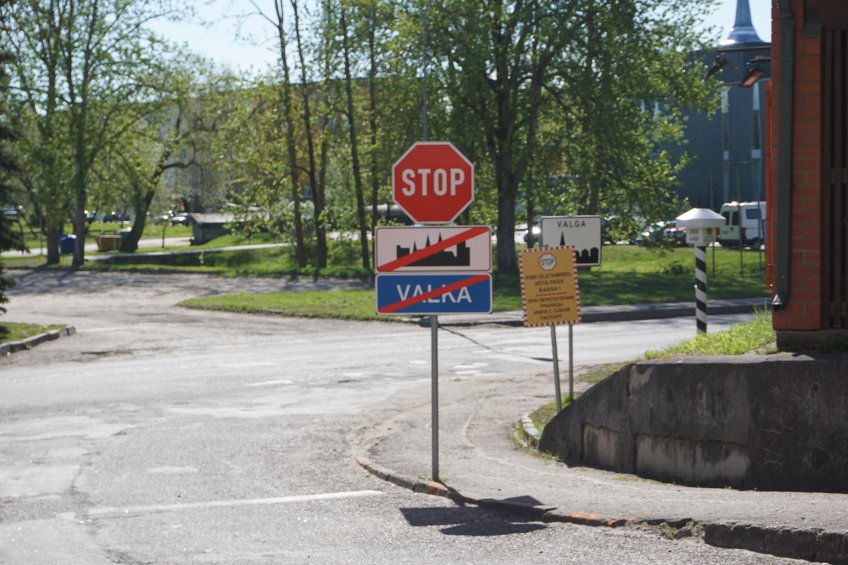Valga is a small, sleepy but nicely-kept town in southern Estonia. Its houses with coloured wooden facades and its less-traditional housing blocks from the communist era provide a roof over the heads of about 12,200 residents. It has everything you need to get by: educational facilities, all sorts of shops, a hospital, a cultural centre and a music school, a stadium, a train station, a bunch of museums and churches for different Christian denominations, gas stations. It even has a lovely recreational area with rocking benches and neatly marked cycling routes along the electric blue Pedeli river.
In short, it would be pretty much a normal Estonian town were it not for its location; and that is not thanks to the fact that it is the southernmost Estonian settlement. On the Pedeli river another town can be found: a quiet settlement called Valka which claims to lie on the Pedele river. It has half the population of its northern neighbour and, well, it’s all about Latvian red-and-white flags.
One single letter (well, two, if we count in the name of the river) that could easily be misspelled thus defines the identity of two towns that nowadays belong to two different countries.
Common history that changed dramatically less than a hundred years ago
As the striking similarity of the naming suggests, the towns used to be one settlement, known by the German name Walk. The records of its existence go well back into the 13th century.
After being run over by the Livonian Order, Russians, Lithuanians and Poles, it was only in 1920 following both Estonian and Latvian movements of independence that the town was split into two as both parties claimed territorial rights over it. The completely arbitrary division of the town arranged at the beginning of the century became visible only after the collapse of the Soviet Union. In 2007, the magic of the Schengen Area reunited the towns.
Invisible border but still a visible change
It is fascinating how meticulously everything changes despite the almost invisible border that is not even detected by telecommunication services. (Except for the euro currency which is now used both by Latvians and Estonians.) The language, apart from the stunning amount of Latvian flags flapping in the wind and a deserted border pass control booth, is the first visible sign that you’ve crossed the border. Sometimes it seems as though it is only the Russian language that unites both towns – through occasional bilingual signs, chatting heard passing by people on the street, and market and shop assistants addressing you this Slavic language when you answer them with a puzzled look.
Same retailer, different groceries
As you enter the first grocery store, the second surprise is on its way. Less than two hundred metres from the border and in a store belonging to a retail chain that can be found in both countries, a completely different array of products is available as if the border changed the cuisine and preferences. The products are naturally subject to a different taxation scheme.
The latter is also one of the reasons why the Latvian counterpart to the Estonian town became a sort of a pilgrimage site for Estonians in search for affordable booze. Estonians namely often complain about the absurdly high prices they have to pay for alcoholic beverages in their homeland as a result of the anti-alcohol campaign introduced in 2017. As a result, when crossing the border it is hard to miss the huge ‘AlkoShops’ inscriptions high in the sky welcoming visitors to the Latvian town.
Massive pilgrimages towards the southern neighbours are giving massive headaches to Estonian politicians. After all, all they wanted was to tackle diseases that come along with excessive alcohol consumption. And to be more environmentally friendly with the introduction of deposits for each bottle bought. Crossing the Latvian border thus kills two birds with one stone (on the short term at least): you pay less per bottle of booze and, yeah, you do not pay additionally for the bottle.
The towns are surrounded by astonishingly beautiful countryside – so if you’re thinking of doing a hike this summer, you could maybe consider heading off to this region and having a stop by the two towns.



Follow the comments: |
|
